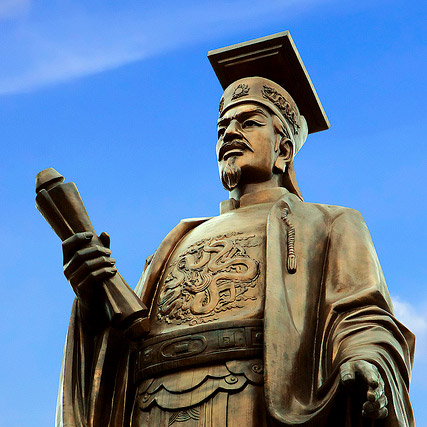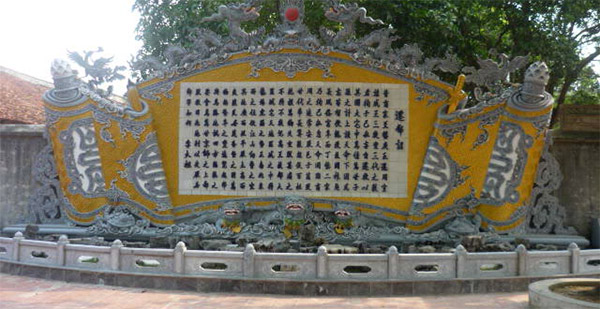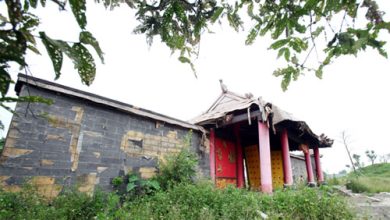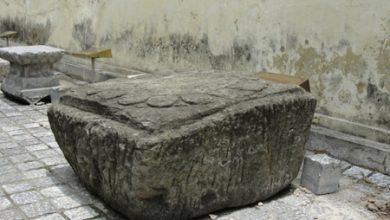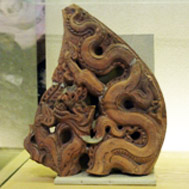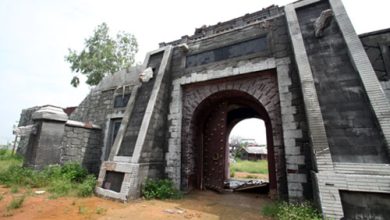Moving the Capital – a historic decision
The Early Le was flourishing only under King Le Dai Hanh’s reign (i.e. Le Hoan). After Le Dai Hanh passed away, the princes fought over the throne for seven years. The 3rd prince Long Viet was ordained to accede to the throne; however, after taking office for 3 days, he was assasinated by his younger brother Long Dinh to usurp the throne.
At that time, Le Long Viet or King Le Trung Tong was 23 years old. Murduring his brother at the age of 19, after acceding to the throne, Le Long Dinh became more cruel and barbaric. Long Dinh often entertained by torturing people to death. Historical documents still record the horrible hobby of Long Dinh – Ngoa Trieu as follow: wrap straw around sinners, soak with oil and burned to death; force offenders to climb up tall trees and cut the root; put people into baskets and drop into the river; split sugarcane on monks’ heads. The rotting court of the Early Le Dynasty and the barbaric hobby of Le Long Dinh caused anger from his people. Therefore, when Long Dinh died at the age of 24, although he had a son, all the mandarins insisted on supporting Commader in Chief Ly Cong Uan to the throne. That was in 1009.
After taking over the throne, Ly Cong Uan found out that Hoa Lu was narrow and rugged, no longer adequate to the role of a capital of a peaceful country. He thought about moving the capital from Hoa Lu to Dai La Citadel. Even at the highest position, all his words must be listened to, Ly Thai To still consulted the movement of the capital with his mandarins. That was a clear expression of a bright king. The full text of the Capital-Moving Devree was as follow:
CAPITAL – MOVING DECREE
“In the old days, the Shang Dynasty, up to the reign of Ban Qing, changed its capital five times, and the Zhou Dynasty, up to the reign of Ping Wang, three times.
Could it be that those kings of the period of the Three Monarchs, when moving their capital in this way, had obeyed an unjustifiable whim?
No, they had simply wanted to choose a center favorable to the edification of an immense undertaking for thousands of generations to come.
Bowing to the will of Heaven and meeting the aspirations of the people, they moved their capital whenever they deemed it necessary, thus ensuring the country’s density, its wealth and prosperity.
On the contrary, because of their will and pleasure, the two dynasties of the Đinh and the Lê chose to ignore the will of Heaven and did not follow the example set by the Zhou. Obstinately they stayed in this place. Their dynasties were short lived, their fates were precarious. The common people were ruined while untold resources remained unused. I suffered greatly from that and am compelled to move the capital to another place.
Whereas, Đại La Citadel, the former capital of His Highness Kao, is located in the heartland of our country. Its location evokes the image of a rolling dragon, a squatting tiger. It is situated at an equal distance of the four points of the compass and corresponds to a favorable orientation of the mounts and rivers. There, the site is sufficiently vast and level, the grounds sufficiently raised and well exposed. The population is protected against floods and river spates, its economy is well developed and prosperous. All over the country, it is the most favourable position to set up the capital over thousands of generations.
I, therefore, wish to benefit from this favorable location and to move the capital there. What do you think of that decision?”
After the edit was promulgated, the whole court anonymously agreed to move the capital to Dai La Citadel.
In July 1010, Ly Thai To started moving the capital to Dai La Citadel.
Soon after the King reached Dai La, he saw a golden dragon image flying up into the sky. He decided to name this land Thang Long (Flying-up Dragon). Then, the King renamed Hoa Lu to Trang An District and Co Phap (where he was born and brought up by Monk Van Hanh) to Thien Duc District.
That was the origin of the name Thang Long Imperial Citadel. Since then, Thang Long Imperial Citadel officially became the capital of an independent and unified state. Hence, 1010 was the year people in Thang Long – Hanoi in particular and Vietnam in general used to calculate the age for their beloved capital city.
After moving the capital to Thang Long, with all favorable elements of nature and people, in a very short time – from the fall of 1010 to early 1011 – some of the most basic palaces of the Thang Long Imperial Citadel Royal were finished.
In this period, Thang Long Imperial Citadel was designed in two parts quite clearly: the Imperial Citadel was home to the king and royal family, and was the place where the king gave audience. The whole court – the headquarter of the feudal state – focused in this place. La Thanh was a wider citadel, surrounding the Imperial Citadel. The area between the two citadel – the Imperial Citadel and La Thanh Citadel was the residence of mandatins and people from all social strata; this was called the Imperial City.

